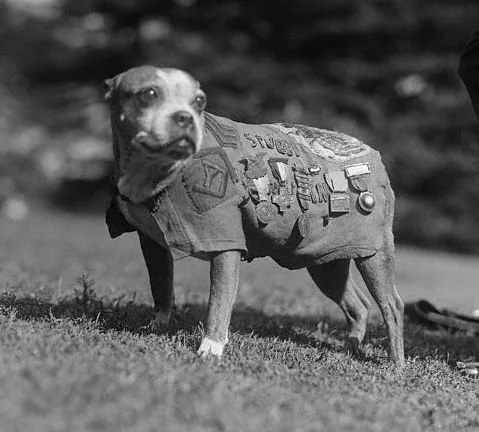Last Thursday, we acknowledged and celebrated the service of our nation’s veterans. Enlisted or conscripted, in peace and in war, their protection of our freedoms and democracy cannot be overstated.
However, humans aren’t the only ones who’ve stood sentry or were dug in the trenches. This week, Rescue Legacy salutes the animals who served.
Through the millennia, a veritable Noah’s Arc of mammals and avians have been employed during combat and for reconnaissance. Horses, elephants and camels transported arms and soldiers and were used for mounted attack. Carrier pigeons ferried messages and collected areal photographs. Today, dolphins and sea lions troll the depths to bring tools to divers and detect mines in harbors.
Cats have been used as a psychological tactic and a source of comfort. At the Battle of Pelusium in 525 BCE, the Achaemenid forces released cats against the embattled Egyptian forces who wouldn’t harm them due to religious beliefs. Aside from controlling vermin on ships of The Royal Navy, cats were a cuddly addition to the sea-faring ranks. Both cats and dogs have served as company mascots and many a canine has stepped up when the war chips were down.
Here are but a few heroic animals who’ve answered the call:
Attached to the 73rd Bomb Wing in WWII, Kodiak the cat not only helped handle incoming paperwork, he could “feel” an incoming bomb and alert his comrades to take cover. Soldiers attributed this skill to heightened sensitivity to changes in atmospheric pressure or a “sixth sense.” “Bomber,” a civilian cat, reportedly distinguished between the sounds of German and British aircraft, thereby herding many Brits into bomb shelters.
The 102nd Infantry Regiment smuggled contraband to France during WWI. Sergeant Stubby the dog sniffed out mustard gas, warned fellow soldiers of incoming artillery and found and comforted the wounded. He once reportedly nabbed a German spy by the seat of his pants earning him a medal for heroism. Stubby was trained to raise his paw in salute which secured his place as the regimental mascot. His remains are enshrined at the Smithsonian Institution.
Simon, a “ratter” cat aboard the HMS Amethyst, sustained life-threatening injuries after his ship was bombarded, unprovoked, by Chinese Communists in 1949. As British seamen recovered in sick bay, Simon, himself healing from shrapnel wounds, curled up next to the injured crew. Morale soared. At the captain’s recommendation, Simon was awarded a Dickin Medal, the animal award for gallantry. He was also promoted to the rank of “Able Seacat.”
“Reckless” the horse lugged supplies and ammo for the Marines of 5/1 Recoilless Rifle Platoon. During one harrowing Korean war skirmish, she made 51 unguided trips to resupply the lines and bring wounded men to safety. Reckless was promoted to sergeant and received two Purple Hearts and a Good Conduct medal. She was brought back to the U.S. after the war and promoted to staff sergeant. A bronze statue in her honor stands at Camp Pendleton.
Some animals offer aid and comfort when the battle is over — and the long road toward recovery begins. Since 2009, Master Sergeant Maverick, a tan lab, has soothed many hearts at the traumatic brain injury and behavioral health clinics at Eisenhauer Army Medical Center in Fort Gordon, Georgia. America’s VetDogs, the group that trained Maverick and many like him, received the Secretary of the Army’s Public Service Award.
Like their human counterparts, many animal veterans didn’t escape combat alive.
We owe them an un-repayable debt.

